Team
Copyright : Laboratoire LEMAR- 2018
Team
Marine coastal areas are particularly exposed to the increasing impact of human activities (urbanisation, pollution, eutrophication). They are also exposed to the effects of global change with sudden and strong variations of several biotic and abiotic parameters (i.e. temperature, oxygen, pH, salinity, currentology, contaminants, trophic conditions). These variations can lead to changes in phytoplankton communities, emergence of pathogens and changes in the specific composition (native or non-native species) of coastal environments. Organisms living in these coastal areas must adapt to these changing environments to maximize their fitness. Understanding the sustainable assemblage of species within communities and their evolution requires knowledge of biotic interactions. Understanding individual adaptive responses in terms of life history traits (or more broadly quantitative biological traits) and integrating their consequences at the population level is also necessary to predict the evolution of biotic interactions and the emergence of harmful species in a changing environment. PANORAMA scientific project is part of this general context. The team strategy is based on the control and integration of a wide range of methodological approaches applied at different organizational levels (epigenetic markers, gene expression, protein functions, physiological performance and behaviour) through in situ, in vivo and in vitro studies.
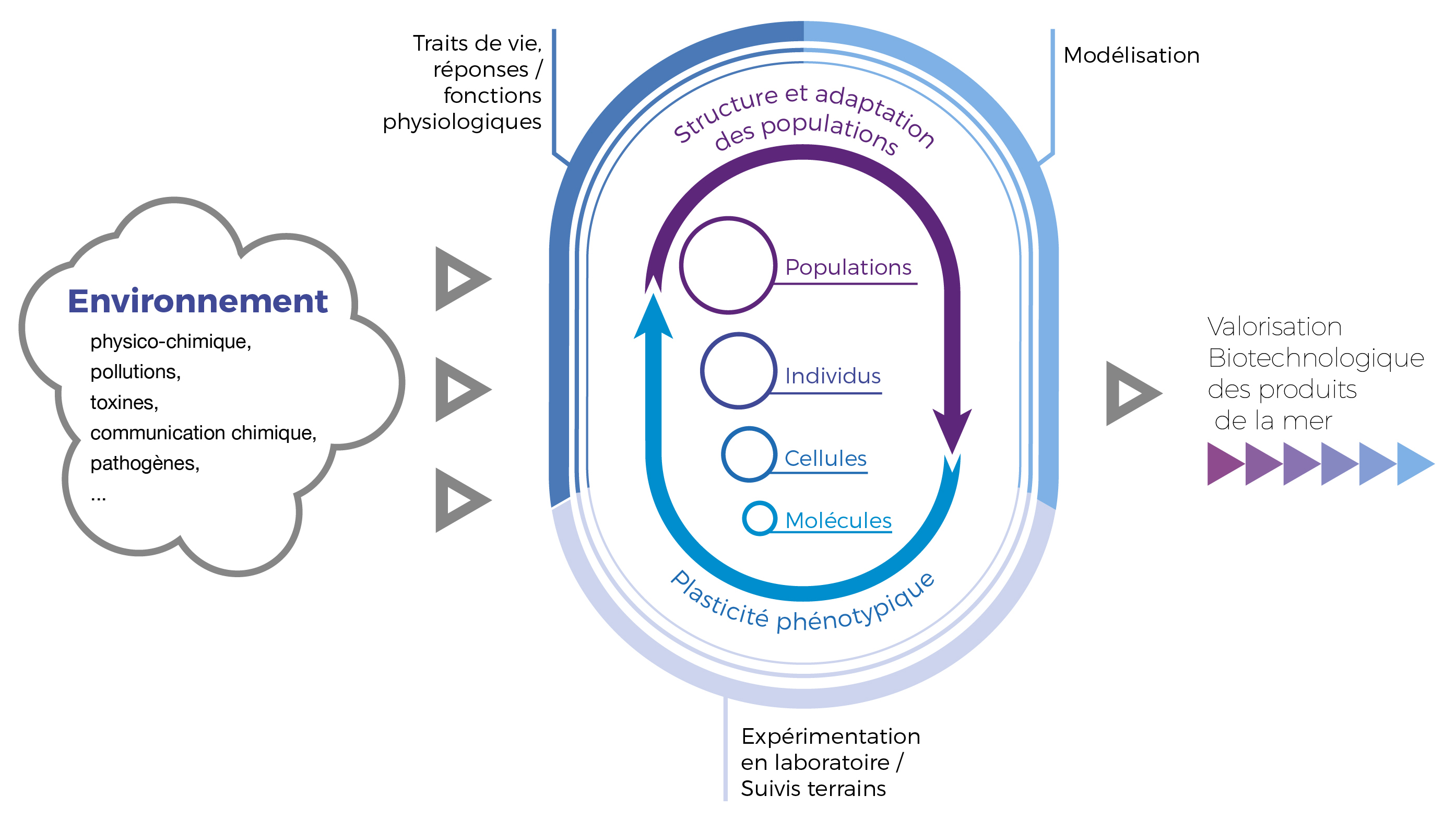
PANORAMA is structured around 6 Research Axes (AR). AR1 and AR2 examine the physiological processes involved in fluctuating environments, and the long-term effects of adaptive processes, distinguishing between phenotypic and genetic responses. AR 3, 4 and 5 aim at better understanding trophic and species interactions by taking into account environmental variability. Finally, in AR6 our research activities target the economic valorisation exploiting the knowledge of metabolic processes and properties of certain marine molecules.
Research Axis 1 : "Population structure and adaptation"
Animators : G. Charrier (UBO) & S. Roussel (UBO).
In the face of environmental change, marine populations can adapt in response to selection forces over generations. However, the adaptive potential of natural populations is conditioned by their degree of genetic variability, which results from their evolutionary history (Figure 8). A better understanding of historical and contemporary processes shaping the genetic diversity of natural populations is therefore necessary to disentangle the processes governing their adaptation to local environmental pressures. In addition, domestic populations can have a significant impact on the genetic diversity of natural conspecific populations, and thus alter their adaptive potential in the face of environmental changes.
The main objectives of RA1 will assess the genetic structure of natural populations (RA1.1) and explore local adaptation patterns in contrasted environments (RA1.2). In addition, interactions between domestic and wild populations will be studied in order to estimate their impact on the evolutionary and adaptive potential of natural populations (RA1.3).
RA1.1 “Structure of marine populations”
RA1.2 “Local adaptation”
RA1.3 “Interactions beetween wild populations and breeding and domestication”
Research Axis 2 : "Acclimatization and life trajectories_ Phenotypic plasticity"
Animators : D. Mazurais (Ifremer) & C. Corporeau (Ifremer)
In addition to local adaptation (see RA1), phenotypic plasticity is an essential component of the ability of marine populations to respond to new environmental constraints. Our research shows that phenotypic plasticity affects a very wide range of life traits related to the development, physiology, morphology and behaviour of organisms. Our work also shows that while phenotypic plasticity is more pronounced in the early stages of life (embryo and larvae), it is still largely predominant in later stages (juvenile and adult). We have thus demonstrated that the effect of the environment on the phenotypic architecture of marine organisms is an important determinant of their life trajectory.
In this context, understanding the energy constraints and underlying trade-offs that will modulate life trajectories are central elements of our prospective because they are essential to understanding adaptive and evolutionary processes. The objectives of the RA2 are therefore:
RA2.1 “Behavior”
RA2.2 “Physiological determinants (Nutrition, reproduction, energy metabolism, growth, cardiac function)”.
RA2.3 “Early conditioning and epigenetics”
Research Axis 3 : "Responses to phycotoxins, diffuse pollution and emerging contaminants: ecotoxicological approach"
Animators : A. Huvet (Ifremer) & J. Laroche (UBO).
Toxic substances of “natural” origin or resulting from human activities constitute a wide range of contaminants that generate potential risks for the ecosystem. This research axis aims to develop ecotoxicological approaches in the marine environment, consisting in exploring the fate and effects of these substances, particularly emerging pollutants (phycotoxins synthesized by certain micro-algae, micro- and nanoplastics, drug residues) and diffuse pollution (due to multiple anthropogenic releases), on organisms and populations in coastal areas. We study the mechanisms of bioaccumulation, purification and biological disturbances generated in marine organisms at each stage of development (gametes, embryos, larvae, juveniles, adults, transgenerational effect) in response to contaminants under different scenarios, acute toxicity, chronic toxicity, cocktail effect. LEMAR also participates in the assessment of contamination levels on the French coast, an important prerequisite for estimating the probability of exposure. The ecotoxicological approach proposed here is fully in line with the framework of an Aquatic Ecotoxicology Network currently being set up at national level, led by IRSTEA-Lyon, and in which LEMAR is a partner; and a PHYCOTOX Research Group on toxic algae and their toxins, of which LEMAR is a co-leader. The ecotoxicology network aims to identify the potential of new “-omics” approaches in an integrative approach to acquire a better knowledge of impacts, to characterize the vulnerability of organisms and populations to chemical stress, and finally to better understand the differential sensitivity of species, a current source of uncertainty in order to consolidate the ecotoxicological assessment of natural environments. The PHYCOTOX GdR has an axis involving the impact of toxic and harmful microalgae and their toxins on marine organisms. Lastly, the Polymers and Ocean GDR, created in 2019, LEMAR being in the scientific comity, aims to stimulate interdisciplinary research among French laboratories working on plastic wastes in aquatic environments. The LEMAR is mostly implicated in the axis Impact and risk assessment.
Research Axis 4 : Environment-Host-Pathogen-Microbiota Interactions (IEHPM)
Animators : F. Pernet (Ifremer) & C. Paillard (CNRS)
In recent years, human activities associated with evolutionary processes and climate change have exacerbated the emergence and severity of many diseases in marine shellfish. Massive deaths of species of economic interest have been associated with bacteria, such as Vibrio and Herpes viruses, of a particular genotype (OsHV-1 μvar). However, the defense mechanisms, and their molecular bases, allowing some undivided individuals to effectively resist their pathogens are not elucidated. Similarly, virulence factors specifically involved in the development of disease have not yet been studied in an evolutionary framework associated with climate change. Finally, the role of environmental parameters, including farming practices, on disease transmission in the marine environment is not well known. The observation of shellfish populations with different levels of susceptibility to their respective pathogens and the recent development of genomic information in shellfish provide the tools necessary to characterize the resistance mechanisms specific to each species of shellfish. In addition, advances in microbial ecology, thanks to high throughput sequencing techniques, have led us to take into account the entire community of microorganisms that make up the microbiota, in close relationship with the environment-host-pathogen tryptic. The objective of this RA 4 will be to better understand the mechanisms governing the development of shellfish diseases (vibriosis and viruses) at different spatial and temporal scales and at different levels of organization, modulated by environmental factors. This RA4’s research will focus on:
RA4.1 “Physiological response of the host”
RA4.2 “Virulence factors of pathogens”
RA4.3 The Host-pathogen-microbiota system and its modulation
Research Axis 5: "Chemical Ecology of Marine Organisms" (ECOM)
Animators : Valérie Stiger (UBO) & Sylvain Petek (IRD).
Chemical ecology is a multidisciplinary field of research, involving a diversity of scientific and technical approaches. Chemical ecology consists of the study of interactions between organisms, and with their environment, mediated by molecules in all their diversity and complexity.
In temperate, tropical and polar environments, marine organisms present physiological adaptations to biotic and abiotic constraints, by producing original primary and/or secondary metabolites, or by selecting a microbiota with a specific surface area and producing defence metabolites; these adaptations thus play a very important role in the community structuring.
The chemical ecology research axis studies the interactions between species, but also the influence of environmental variations on these interactions and on the organisms inhabiting these ecosystems. In addition, following the isolation of defence molecules, this RA also makes possible to consider biotechnological applications of metabolites (link with RA6). Indeed, the communication or protection molecules isolated in this RA5 can be proposed as marine active ingredients and then can be used in various industrial sectors.
This RA5 is structured in 4 sub-axes allowing to cover all the team’s themes related to chemical ecology. Different models are studied: microalgae, macroalgae, sponges, alcyonaria and their associated microflora.
RA5.1 “Chemical adaptation to abiotic factors: photoprotection, osmoregulation, thermoregulation”.
RA5.2 “Chemical adaptation to biotic factors: grazing and allelopathy”
RA5.3 “Quorum sensing”
RA5.4 “Adhesion mechanisms – activation, inhibition”
Research Axis 6 : "Biotechnological valorization of seafood products (aquaculture, food, health, cosmetics)
Animators : C. Hellio (UBO) & P. Soudant (CNRS).
The enhancement of marine organisms is currently a major societal challenge for the production of new food resources (i.e. to fill the growing global deficit in proteins and omega 3 lipids) but also to provide new molecules in the fields of human, animal and plant health as well as in the field of biomaterials.
This RA6 is part of a continuum between fundamental research developed in other RAs and applied research. It will be based not only on the disciplinary expertise (ecology, biochemistry, molecular biology, and microbiology) of the members of Team 1 but also on the diversity of the biological models studied (bacteria, microalgae, macroalgae, halophytes, molluscs, fish) and their co-products.
This RA also benefits from two LEMAR technological platforms BIODIMAR® and LIPIDOCEAN, which are at the forefront of screening, fine analysis and purification methods.
Downstream, it will consolidate the strong links established during the previous five-year period with economic actors in the West of France.
RA 6.1 Biomimetic approaches
RA 6.2 Biotechnological applications of chemical ecology
RA 6.3 Development of anti-biofilm and antifouling strategies
RA 6.4 Industrial outcomes of marine lipids
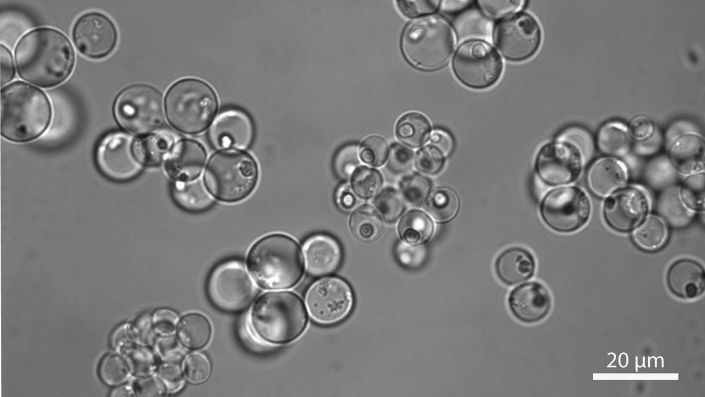
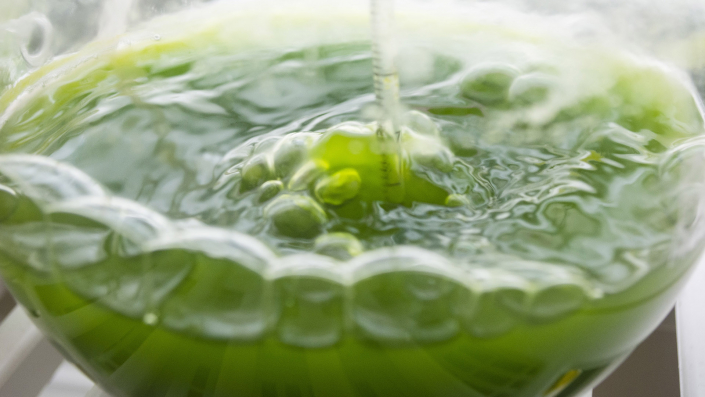
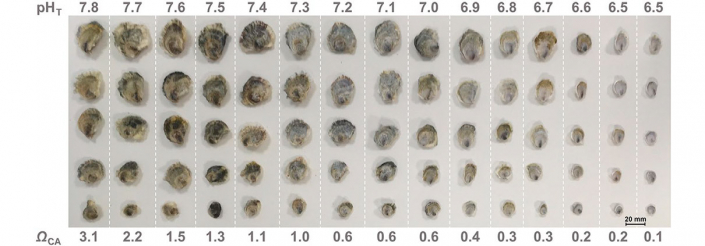
 https://www-iuem.univ-brest.fr/lemar/wp-content/uploads/2018/06/fabioux-caroline-web2.jpg
1080
1920
sherve@univ-brest.fr
https://www-iuem.univ-brest.fr/lemar/wp-content/uploads/2018/10/logo-lemar-big.png
sherve@univ-brest.fr2018-06-18 17:25:222021-01-04 13:42:22Caroline FABIOUX
https://www-iuem.univ-brest.fr/lemar/wp-content/uploads/2018/06/fabioux-caroline-web2.jpg
1080
1920
sherve@univ-brest.fr
https://www-iuem.univ-brest.fr/lemar/wp-content/uploads/2018/10/logo-lemar-big.png
sherve@univ-brest.fr2018-06-18 17:25:222021-01-04 13:42:22Caroline FABIOUX https://www-iuem.univ-brest.fr/lemar/wp-content/uploads/2018/06/Hegaret-Helene.jpg
1080
1920
sherve@univ-brest.fr
https://www-iuem.univ-brest.fr/lemar/wp-content/uploads/2018/10/logo-lemar-big.png
sherve@univ-brest.fr2018-06-18 17:25:382021-01-04 13:43:07Hélène HEGARET
https://www-iuem.univ-brest.fr/lemar/wp-content/uploads/2018/06/Hegaret-Helene.jpg
1080
1920
sherve@univ-brest.fr
https://www-iuem.univ-brest.fr/lemar/wp-content/uploads/2018/10/logo-lemar-big.png
sherve@univ-brest.fr2018-06-18 17:25:382021-01-04 13:43:07Hélène HEGARET https://www-iuem.univ-brest.fr/lemar/wp-content/uploads/2024/01/Le-Luyer-Jeremie.jpg
1080
1920
Sebastien Herve
https://www-iuem.univ-brest.fr/lemar/wp-content/uploads/2018/10/logo-lemar-big.png
Sebastien Herve2024-01-24 14:36:532024-11-26 11:56:47Jérémy LE LUYER
https://www-iuem.univ-brest.fr/lemar/wp-content/uploads/2024/01/Le-Luyer-Jeremie.jpg
1080
1920
Sebastien Herve
https://www-iuem.univ-brest.fr/lemar/wp-content/uploads/2018/10/logo-lemar-big.png
Sebastien Herve2024-01-24 14:36:532024-11-26 11:56:47Jérémy LE LUYER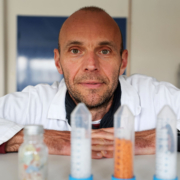 https://www-iuem.univ-brest.fr/lemar/wp-content/uploads/2018/06/Huvet_Arnaud-main.jpg
1080
1920
sherve@univ-brest.fr
https://www-iuem.univ-brest.fr/lemar/wp-content/uploads/2018/10/logo-lemar-big.png
sherve@univ-brest.fr2022-04-06 16:39:182022-04-06 16:40:31Arnaud HUVET
https://www-iuem.univ-brest.fr/lemar/wp-content/uploads/2018/06/Huvet_Arnaud-main.jpg
1080
1920
sherve@univ-brest.fr
https://www-iuem.univ-brest.fr/lemar/wp-content/uploads/2018/10/logo-lemar-big.png
sherve@univ-brest.fr2022-04-06 16:39:182022-04-06 16:40:31Arnaud HUVET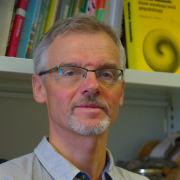 https://www-iuem.univ-brest.fr/lemar/wp-content/uploads/2018/10/auffret-michel.jpg
1080
1920
sherve@univ-brest.fr
https://www-iuem.univ-brest.fr/lemar/wp-content/uploads/2018/10/logo-lemar-big.png
sherve@univ-brest.fr2018-10-04 14:21:112021-01-04 13:46:31Michel AUFFRET
https://www-iuem.univ-brest.fr/lemar/wp-content/uploads/2018/10/auffret-michel.jpg
1080
1920
sherve@univ-brest.fr
https://www-iuem.univ-brest.fr/lemar/wp-content/uploads/2018/10/logo-lemar-big.png
sherve@univ-brest.fr2018-10-04 14:21:112021-01-04 13:46:31Michel AUFFRET https://www-iuem.univ-brest.fr/lemar/wp-content/uploads/2018/05/Charrier_Gregory.jpg
1080
1920
sherve@univ-brest.fr
https://www-iuem.univ-brest.fr/lemar/wp-content/uploads/2018/10/logo-lemar-big.png
sherve@univ-brest.fr2018-05-28 14:22:592021-01-04 13:47:53Grégory CHARRIER
https://www-iuem.univ-brest.fr/lemar/wp-content/uploads/2018/05/Charrier_Gregory.jpg
1080
1920
sherve@univ-brest.fr
https://www-iuem.univ-brest.fr/lemar/wp-content/uploads/2018/10/logo-lemar-big.png
sherve@univ-brest.fr2018-05-28 14:22:592021-01-04 13:47:53Grégory CHARRIER https://www-iuem.univ-brest.fr/lemar/wp-content/uploads/2018/05/Connan-Solene-main.jpg
1080
1920
sherve@univ-brest.fr
https://www-iuem.univ-brest.fr/lemar/wp-content/uploads/2018/10/logo-lemar-big.png
sherve@univ-brest.fr2020-11-06 09:40:042022-04-27 16:34:03Solène CONNAN
https://www-iuem.univ-brest.fr/lemar/wp-content/uploads/2018/05/Connan-Solene-main.jpg
1080
1920
sherve@univ-brest.fr
https://www-iuem.univ-brest.fr/lemar/wp-content/uploads/2018/10/logo-lemar-big.png
sherve@univ-brest.fr2020-11-06 09:40:042022-04-27 16:34:03Solène CONNAN https://www-iuem.univ-brest.fr/lemar/wp-content/uploads/2018/06/Corporeau-Charlotte-1.jpg
1080
1920
sherve@univ-brest.fr
https://www-iuem.univ-brest.fr/lemar/wp-content/uploads/2018/10/logo-lemar-big.png
sherve@univ-brest.fr2018-06-18 17:25:092021-01-04 13:48:35Charlotte CORPOREAU
https://www-iuem.univ-brest.fr/lemar/wp-content/uploads/2018/06/Corporeau-Charlotte-1.jpg
1080
1920
sherve@univ-brest.fr
https://www-iuem.univ-brest.fr/lemar/wp-content/uploads/2018/10/logo-lemar-big.png
sherve@univ-brest.fr2018-06-18 17:25:092021-01-04 13:48:35Charlotte CORPOREAU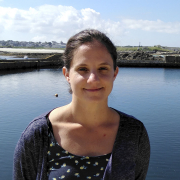 https://www-iuem.univ-brest.fr/lemar/wp-content/uploads/2018/06/di-poi-carole_2.jpg
1080
1920
sherve@univ-brest.fr
https://www-iuem.univ-brest.fr/lemar/wp-content/uploads/2018/10/logo-lemar-big.png
sherve@univ-brest.fr2018-06-18 17:25:172024-04-10 09:23:07Carole DI POI
https://www-iuem.univ-brest.fr/lemar/wp-content/uploads/2018/06/di-poi-carole_2.jpg
1080
1920
sherve@univ-brest.fr
https://www-iuem.univ-brest.fr/lemar/wp-content/uploads/2018/10/logo-lemar-big.png
sherve@univ-brest.fr2018-06-18 17:25:172024-04-10 09:23:07Carole DI POI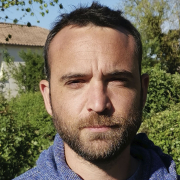 https://www-iuem.univ-brest.fr/lemar/wp-content/uploads/2021/09/Dupoue-andreaz.jpg
1080
1920
sherve@univ-brest.fr
https://www-iuem.univ-brest.fr/lemar/wp-content/uploads/2018/10/logo-lemar-big.png
sherve@univ-brest.fr2021-09-20 10:22:522023-01-19 10:26:10Andréaz DUPOUÉ
https://www-iuem.univ-brest.fr/lemar/wp-content/uploads/2021/09/Dupoue-andreaz.jpg
1080
1920
sherve@univ-brest.fr
https://www-iuem.univ-brest.fr/lemar/wp-content/uploads/2018/10/logo-lemar-big.png
sherve@univ-brest.fr2021-09-20 10:22:522023-01-19 10:26:10Andréaz DUPOUÉ https://www-iuem.univ-brest.fr/lemar/wp-content/uploads/2018/10/Even_Yasmine-main.jpg
1080
1920
sherve@univ-brest.fr
https://www-iuem.univ-brest.fr/lemar/wp-content/uploads/2018/10/logo-lemar-big.png
sherve@univ-brest.fr2018-10-29 10:15:282022-10-12 13:17:03Yasmine EVEN
https://www-iuem.univ-brest.fr/lemar/wp-content/uploads/2018/10/Even_Yasmine-main.jpg
1080
1920
sherve@univ-brest.fr
https://www-iuem.univ-brest.fr/lemar/wp-content/uploads/2018/10/logo-lemar-big.png
sherve@univ-brest.fr2018-10-29 10:15:282022-10-12 13:17:03Yasmine EVEN https://www-iuem.univ-brest.fr/lemar/wp-content/uploads/2018/06/fabioux-caroline-web2.jpg
1080
1920
sherve@univ-brest.fr
https://www-iuem.univ-brest.fr/lemar/wp-content/uploads/2018/10/logo-lemar-big.png
sherve@univ-brest.fr2018-06-18 17:25:222021-01-04 13:42:22Caroline FABIOUX
https://www-iuem.univ-brest.fr/lemar/wp-content/uploads/2018/06/fabioux-caroline-web2.jpg
1080
1920
sherve@univ-brest.fr
https://www-iuem.univ-brest.fr/lemar/wp-content/uploads/2018/10/logo-lemar-big.png
sherve@univ-brest.fr2018-06-18 17:25:222021-01-04 13:42:22Caroline FABIOUX https://www-iuem.univ-brest.fr/lemar/wp-content/uploads/2018/06/Fleury_Elodie-main.jpg
1080
1920
sherve@univ-brest.fr
https://www-iuem.univ-brest.fr/lemar/wp-content/uploads/2018/10/logo-lemar-big.png
sherve@univ-brest.fr2018-06-18 17:25:232021-01-04 13:50:25Elodie FLEURY
https://www-iuem.univ-brest.fr/lemar/wp-content/uploads/2018/06/Fleury_Elodie-main.jpg
1080
1920
sherve@univ-brest.fr
https://www-iuem.univ-brest.fr/lemar/wp-content/uploads/2018/10/logo-lemar-big.png
sherve@univ-brest.fr2018-06-18 17:25:232021-01-04 13:50:25Elodie FLEURY https://www-iuem.univ-brest.fr/lemar/wp-content/uploads/2018/06/Hegaret-Helene.jpg
1080
1920
sherve@univ-brest.fr
https://www-iuem.univ-brest.fr/lemar/wp-content/uploads/2018/10/logo-lemar-big.png
sherve@univ-brest.fr2018-06-18 17:25:382021-01-04 13:43:07Hélène HEGARET
https://www-iuem.univ-brest.fr/lemar/wp-content/uploads/2018/06/Hegaret-Helene.jpg
1080
1920
sherve@univ-brest.fr
https://www-iuem.univ-brest.fr/lemar/wp-content/uploads/2018/10/logo-lemar-big.png
sherve@univ-brest.fr2018-06-18 17:25:382021-01-04 13:43:07Hélène HEGARET https://www-iuem.univ-brest.fr/lemar/wp-content/uploads/2018/10/Hellio-Claire_main.jpg
1080
1920
sherve@univ-brest.fr
https://www-iuem.univ-brest.fr/lemar/wp-content/uploads/2018/10/logo-lemar-big.png
sherve@univ-brest.fr2018-10-29 10:15:302021-01-04 13:50:46Claire HELLIO
https://www-iuem.univ-brest.fr/lemar/wp-content/uploads/2018/10/Hellio-Claire_main.jpg
1080
1920
sherve@univ-brest.fr
https://www-iuem.univ-brest.fr/lemar/wp-content/uploads/2018/10/logo-lemar-big.png
sherve@univ-brest.fr2018-10-29 10:15:302021-01-04 13:50:46Claire HELLIO https://www-iuem.univ-brest.fr/lemar/wp-content/uploads/2021/02/Hervio-Heath_Dominique.jpg
1080
1920
sherve@univ-brest.fr
https://www-iuem.univ-brest.fr/lemar/wp-content/uploads/2018/10/logo-lemar-big.png
sherve@univ-brest.fr2021-02-25 16:24:102021-02-25 16:24:10Dominique HERVIO-HEATH
https://www-iuem.univ-brest.fr/lemar/wp-content/uploads/2021/02/Hervio-Heath_Dominique.jpg
1080
1920
sherve@univ-brest.fr
https://www-iuem.univ-brest.fr/lemar/wp-content/uploads/2018/10/logo-lemar-big.png
sherve@univ-brest.fr2021-02-25 16:24:102021-02-25 16:24:10Dominique HERVIO-HEATH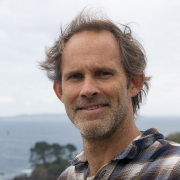 https://www-iuem.univ-brest.fr/lemar/wp-content/uploads/2018/10/Kraffe_Edouard.jpg
1080
1920
sherve@univ-brest.fr
https://www-iuem.univ-brest.fr/lemar/wp-content/uploads/2018/10/logo-lemar-big.png
sherve@univ-brest.fr2018-10-29 10:36:172022-05-16 10:45:10Edouard KRAFFE
https://www-iuem.univ-brest.fr/lemar/wp-content/uploads/2018/10/Kraffe_Edouard.jpg
1080
1920
sherve@univ-brest.fr
https://www-iuem.univ-brest.fr/lemar/wp-content/uploads/2018/10/logo-lemar-big.png
sherve@univ-brest.fr2018-10-29 10:36:172022-05-16 10:45:10Edouard KRAFFE https://www-iuem.univ-brest.fr/lemar/wp-content/uploads/2018/04/generic-lemar-man.png
1080
1920
sherve@univ-brest.fr
https://www-iuem.univ-brest.fr/lemar/wp-content/uploads/2018/10/logo-lemar-big.png
sherve@univ-brest.fr2018-10-29 10:36:172021-01-04 13:51:57Frédéric LANCIEN
https://www-iuem.univ-brest.fr/lemar/wp-content/uploads/2018/04/generic-lemar-man.png
1080
1920
sherve@univ-brest.fr
https://www-iuem.univ-brest.fr/lemar/wp-content/uploads/2018/10/logo-lemar-big.png
sherve@univ-brest.fr2018-10-29 10:36:172021-01-04 13:51:57Frédéric LANCIEN https://www-iuem.univ-brest.fr/lemar/wp-content/uploads/2018/04/generic-lemar-man.png
1080
1920
sherve@univ-brest.fr
https://www-iuem.univ-brest.fr/lemar/wp-content/uploads/2018/10/logo-lemar-big.png
sherve@univ-brest.fr2018-10-29 10:36:182021-01-04 13:52:45Jean LAROCHE
https://www-iuem.univ-brest.fr/lemar/wp-content/uploads/2018/04/generic-lemar-man.png
1080
1920
sherve@univ-brest.fr
https://www-iuem.univ-brest.fr/lemar/wp-content/uploads/2018/10/logo-lemar-big.png
sherve@univ-brest.fr2018-10-29 10:36:182021-01-04 13:52:45Jean LAROCHE https://www-iuem.univ-brest.fr/lemar/wp-content/uploads/2020/12/Lavaud-Johann-main.jpg
1080
1920
Adeline Bidault
https://www-iuem.univ-brest.fr/lemar/wp-content/uploads/2018/10/logo-lemar-big.png
Adeline Bidault2020-12-16 11:38:472024-12-19 08:16:41Johann LAVAUD
https://www-iuem.univ-brest.fr/lemar/wp-content/uploads/2020/12/Lavaud-Johann-main.jpg
1080
1920
Adeline Bidault
https://www-iuem.univ-brest.fr/lemar/wp-content/uploads/2018/10/logo-lemar-big.png
Adeline Bidault2020-12-16 11:38:472024-12-19 08:16:41Johann LAVAUD https://www-iuem.univ-brest.fr/lemar/wp-content/uploads/2018/10/LeBlay.jpg
1125
1916
sherve@univ-brest.fr
https://www-iuem.univ-brest.fr/lemar/wp-content/uploads/2018/10/logo-lemar-big.png
sherve@univ-brest.fr2018-10-29 10:15:322021-12-07 11:51:26Gwenaëlle LE BLAY
https://www-iuem.univ-brest.fr/lemar/wp-content/uploads/2018/10/LeBlay.jpg
1125
1916
sherve@univ-brest.fr
https://www-iuem.univ-brest.fr/lemar/wp-content/uploads/2018/10/logo-lemar-big.png
sherve@univ-brest.fr2018-10-29 10:15:322021-12-07 11:51:26Gwenaëlle LE BLAY https://www-iuem.univ-brest.fr/lemar/wp-content/uploads/2024/01/Le-Luyer-Jeremie.jpg
1080
1920
Sebastien Herve
https://www-iuem.univ-brest.fr/lemar/wp-content/uploads/2018/10/logo-lemar-big.png
Sebastien Herve2024-01-24 14:36:532024-11-26 11:56:47Jérémy LE LUYER
https://www-iuem.univ-brest.fr/lemar/wp-content/uploads/2024/01/Le-Luyer-Jeremie.jpg
1080
1920
Sebastien Herve
https://www-iuem.univ-brest.fr/lemar/wp-content/uploads/2018/10/logo-lemar-big.png
Sebastien Herve2024-01-24 14:36:532024-11-26 11:56:47Jérémy LE LUYER https://www-iuem.univ-brest.fr/lemar/wp-content/uploads/2020/12/Loizeau_Veronique-1.jpg
1080
1920
sherve@univ-brest.fr
https://www-iuem.univ-brest.fr/lemar/wp-content/uploads/2018/10/logo-lemar-big.png
sherve@univ-brest.fr2020-12-16 12:06:382021-01-04 13:36:05Véronique LOIZEAU
https://www-iuem.univ-brest.fr/lemar/wp-content/uploads/2020/12/Loizeau_Veronique-1.jpg
1080
1920
sherve@univ-brest.fr
https://www-iuem.univ-brest.fr/lemar/wp-content/uploads/2018/10/logo-lemar-big.png
sherve@univ-brest.fr2020-12-16 12:06:382021-01-04 13:36:05Véronique LOIZEAU https://www-iuem.univ-brest.fr/lemar/wp-content/uploads/2019/08/photo-perso-site-internet-LEMAR.jpg
1080
1555
sherve@univ-brest.fr
https://www-iuem.univ-brest.fr/lemar/wp-content/uploads/2018/10/logo-lemar-big.png
sherve@univ-brest.fr2018-10-29 10:15:432023-09-25 09:01:59Stéphanie MADEC
https://www-iuem.univ-brest.fr/lemar/wp-content/uploads/2019/08/photo-perso-site-internet-LEMAR.jpg
1080
1555
sherve@univ-brest.fr
https://www-iuem.univ-brest.fr/lemar/wp-content/uploads/2018/10/logo-lemar-big.png
sherve@univ-brest.fr2018-10-29 10:15:432023-09-25 09:01:59Stéphanie MADEC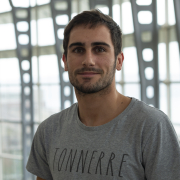 https://www-iuem.univ-brest.fr/lemar/wp-content/uploads/2023/04/LONG_Marc-scaled.jpg
1706
2560
sherve@univ-brest.fr
https://www-iuem.univ-brest.fr/lemar/wp-content/uploads/2018/10/logo-lemar-big.png
sherve@univ-brest.fr2022-11-14 17:30:502022-11-14 17:30:50Marc LONG
https://www-iuem.univ-brest.fr/lemar/wp-content/uploads/2023/04/LONG_Marc-scaled.jpg
1706
2560
sherve@univ-brest.fr
https://www-iuem.univ-brest.fr/lemar/wp-content/uploads/2018/10/logo-lemar-big.png
sherve@univ-brest.fr2022-11-14 17:30:502022-11-14 17:30:50Marc LONG https://www-iuem.univ-brest.fr/lemar/wp-content/uploads/2018/10/mazurais-david.jpg
1080
1920
sherve@univ-brest.fr
https://www-iuem.univ-brest.fr/lemar/wp-content/uploads/2018/10/logo-lemar-big.png
sherve@univ-brest.fr2018-10-29 10:36:202024-03-12 08:54:25David MAZURAIS
https://www-iuem.univ-brest.fr/lemar/wp-content/uploads/2018/10/mazurais-david.jpg
1080
1920
sherve@univ-brest.fr
https://www-iuem.univ-brest.fr/lemar/wp-content/uploads/2018/10/logo-lemar-big.png
sherve@univ-brest.fr2018-10-29 10:36:202024-03-12 08:54:25David MAZURAIS https://www-iuem.univ-brest.fr/lemar/wp-content/uploads/2018/04/generic-lemar-man.png
1080
1920
sherve@univ-brest.fr
https://www-iuem.univ-brest.fr/lemar/wp-content/uploads/2018/10/logo-lemar-big.png
sherve@univ-brest.fr2018-10-29 10:36:212021-01-04 16:42:38Dario MORAGA
https://www-iuem.univ-brest.fr/lemar/wp-content/uploads/2018/04/generic-lemar-man.png
1080
1920
sherve@univ-brest.fr
https://www-iuem.univ-brest.fr/lemar/wp-content/uploads/2018/10/logo-lemar-big.png
sherve@univ-brest.fr2018-10-29 10:36:212021-01-04 16:42:38Dario MORAGA https://www-iuem.univ-brest.fr/lemar/wp-content/uploads/2018/04/generic-lemar-woman.png
1080
1920
sherve@univ-brest.fr
https://www-iuem.univ-brest.fr/lemar/wp-content/uploads/2018/10/logo-lemar-big.png
sherve@univ-brest.fr2018-10-29 10:15:372021-01-04 13:42:51Hélène OLLIVIER
https://www-iuem.univ-brest.fr/lemar/wp-content/uploads/2018/04/generic-lemar-woman.png
1080
1920
sherve@univ-brest.fr
https://www-iuem.univ-brest.fr/lemar/wp-content/uploads/2018/10/logo-lemar-big.png
sherve@univ-brest.fr2018-10-29 10:15:372021-01-04 13:42:51Hélène OLLIVIER https://www-iuem.univ-brest.fr/lemar/wp-content/uploads/2018/05/Paillard-Christine.jpg
1080
1920
sherve@univ-brest.fr
https://www-iuem.univ-brest.fr/lemar/wp-content/uploads/2018/10/logo-lemar-big.png
sherve@univ-brest.fr2018-05-28 14:23:142021-12-09 15:31:09Christine PAILLARD
https://www-iuem.univ-brest.fr/lemar/wp-content/uploads/2018/05/Paillard-Christine.jpg
1080
1920
sherve@univ-brest.fr
https://www-iuem.univ-brest.fr/lemar/wp-content/uploads/2018/10/logo-lemar-big.png
sherve@univ-brest.fr2018-05-28 14:23:142021-12-09 15:31:09Christine PAILLARD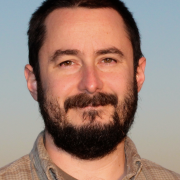 https://www-iuem.univ-brest.fr/lemar/wp-content/uploads/2022/05/Pante-Eric.png
1080
1920
sherve@univ-brest.fr
https://www-iuem.univ-brest.fr/lemar/wp-content/uploads/2018/10/logo-lemar-big.png
sherve@univ-brest.fr2022-05-25 09:06:092022-10-21 15:20:55Eric PANTE
https://www-iuem.univ-brest.fr/lemar/wp-content/uploads/2022/05/Pante-Eric.png
1080
1920
sherve@univ-brest.fr
https://www-iuem.univ-brest.fr/lemar/wp-content/uploads/2018/10/logo-lemar-big.png
sherve@univ-brest.fr2022-05-25 09:06:092022-10-21 15:20:55Eric PANTE https://www-iuem.univ-brest.fr/lemar/wp-content/uploads/2018/06/Paul-Pont-Ika.jpg
1080
1920
sherve@univ-brest.fr
https://www-iuem.univ-brest.fr/lemar/wp-content/uploads/2018/10/logo-lemar-big.png
sherve@univ-brest.fr2018-06-18 17:26:292024-09-26 15:24:01Ika PAUL-PONT
https://www-iuem.univ-brest.fr/lemar/wp-content/uploads/2018/06/Paul-Pont-Ika.jpg
1080
1920
sherve@univ-brest.fr
https://www-iuem.univ-brest.fr/lemar/wp-content/uploads/2018/10/logo-lemar-big.png
sherve@univ-brest.fr2018-06-18 17:26:292024-09-26 15:24:01Ika PAUL-PONT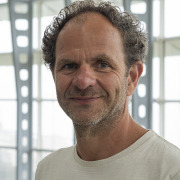 https://www-iuem.univ-brest.fr/lemar/wp-content/uploads/2018/10/Pernet_Fabrice-2.jpg
1080
1920
sherve@univ-brest.fr
https://www-iuem.univ-brest.fr/lemar/wp-content/uploads/2018/10/logo-lemar-big.png
sherve@univ-brest.fr2018-10-29 10:36:232021-01-04 16:45:02Fabrice PERNET
https://www-iuem.univ-brest.fr/lemar/wp-content/uploads/2018/10/Pernet_Fabrice-2.jpg
1080
1920
sherve@univ-brest.fr
https://www-iuem.univ-brest.fr/lemar/wp-content/uploads/2018/10/logo-lemar-big.png
sherve@univ-brest.fr2018-10-29 10:36:232021-01-04 16:45:02Fabrice PERNET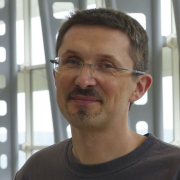 https://www-iuem.univ-brest.fr/lemar/wp-content/uploads/2018/05/Petek-Sylvain.jpg
1080
1920
sherve@univ-brest.fr
https://www-iuem.univ-brest.fr/lemar/wp-content/uploads/2018/10/logo-lemar-big.png
sherve@univ-brest.fr2020-01-30 09:47:492022-05-18 10:36:52Sylvain PETEK
https://www-iuem.univ-brest.fr/lemar/wp-content/uploads/2018/05/Petek-Sylvain.jpg
1080
1920
sherve@univ-brest.fr
https://www-iuem.univ-brest.fr/lemar/wp-content/uploads/2018/10/logo-lemar-big.png
sherve@univ-brest.fr2020-01-30 09:47:492022-05-18 10:36:52Sylvain PETEK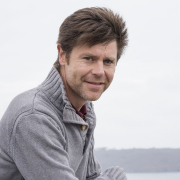 https://www-iuem.univ-brest.fr/lemar/wp-content/uploads/2018/06/Pichereau-Vianney.jpg
1080
1920
sherve@univ-brest.fr
https://www-iuem.univ-brest.fr/lemar/wp-content/uploads/2018/10/logo-lemar-big.png
sherve@univ-brest.fr2018-06-18 17:26:372023-12-22 11:27:57Vianney PICHEREAU
https://www-iuem.univ-brest.fr/lemar/wp-content/uploads/2018/06/Pichereau-Vianney.jpg
1080
1920
sherve@univ-brest.fr
https://www-iuem.univ-brest.fr/lemar/wp-content/uploads/2018/10/logo-lemar-big.png
sherve@univ-brest.fr2018-06-18 17:26:372023-12-22 11:27:57Vianney PICHEREAU https://www-iuem.univ-brest.fr/lemar/wp-content/uploads/2018/06/Roussel-Sabine.jpg
1080
1920
sherve@univ-brest.fr
https://www-iuem.univ-brest.fr/lemar/wp-content/uploads/2018/10/logo-lemar-big.png
sherve@univ-brest.fr2018-06-18 17:26:552021-01-04 16:47:21Sabine ROUSSEL
https://www-iuem.univ-brest.fr/lemar/wp-content/uploads/2018/06/Roussel-Sabine.jpg
1080
1920
sherve@univ-brest.fr
https://www-iuem.univ-brest.fr/lemar/wp-content/uploads/2018/10/logo-lemar-big.png
sherve@univ-brest.fr2018-06-18 17:26:552021-01-04 16:47:21Sabine ROUSSEL https://www-iuem.univ-brest.fr/lemar/wp-content/uploads/2018/06/Salin-Karine.jpg
1080
1920
sherve@univ-brest.fr
https://www-iuem.univ-brest.fr/lemar/wp-content/uploads/2018/10/logo-lemar-big.png
sherve@univ-brest.fr2018-09-10 17:48:182022-04-06 16:27:38Karine SALIN
https://www-iuem.univ-brest.fr/lemar/wp-content/uploads/2018/06/Salin-Karine.jpg
1080
1920
sherve@univ-brest.fr
https://www-iuem.univ-brest.fr/lemar/wp-content/uploads/2018/10/logo-lemar-big.png
sherve@univ-brest.fr2018-09-10 17:48:182022-04-06 16:27:38Karine SALIN https://www-iuem.univ-brest.fr/lemar/wp-content/uploads/2018/10/servili-arianna.jpg
1080
1920
sherve@univ-brest.fr
https://www-iuem.univ-brest.fr/lemar/wp-content/uploads/2018/10/logo-lemar-big.png
sherve@univ-brest.fr2018-10-04 14:48:022021-01-04 16:48:01Arianna SERVILI
https://www-iuem.univ-brest.fr/lemar/wp-content/uploads/2018/10/servili-arianna.jpg
1080
1920
sherve@univ-brest.fr
https://www-iuem.univ-brest.fr/lemar/wp-content/uploads/2018/10/logo-lemar-big.png
sherve@univ-brest.fr2018-10-04 14:48:022021-01-04 16:48:01Arianna SERVILI https://www-iuem.univ-brest.fr/lemar/wp-content/uploads/2018/06/soudant-philippe-lemar.jpg
902
1600
sherve@univ-brest.fr
https://www-iuem.univ-brest.fr/lemar/wp-content/uploads/2018/10/logo-lemar-big.png
sherve@univ-brest.fr2018-06-18 17:27:102022-04-04 14:30:11Philippe SOUDANT
https://www-iuem.univ-brest.fr/lemar/wp-content/uploads/2018/06/soudant-philippe-lemar.jpg
902
1600
sherve@univ-brest.fr
https://www-iuem.univ-brest.fr/lemar/wp-content/uploads/2018/10/logo-lemar-big.png
sherve@univ-brest.fr2018-06-18 17:27:102022-04-04 14:30:11Philippe SOUDANT
 https://www-iuem.univ-brest.fr/lemar/wp-content/uploads/2018/09/vagner-marie.jpg
1080
1920
petek
https://www-iuem.univ-brest.fr/lemar/wp-content/uploads/2018/10/logo-lemar-big.png
petek2019-11-12 12:24:242022-03-29 12:56:02Marie VAGNER
https://www-iuem.univ-brest.fr/lemar/wp-content/uploads/2018/09/vagner-marie.jpg
1080
1920
petek
https://www-iuem.univ-brest.fr/lemar/wp-content/uploads/2018/10/logo-lemar-big.png
petek2019-11-12 12:24:242022-03-29 12:56:02Marie VAGNER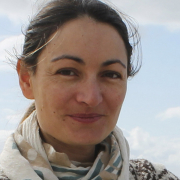 https://www-iuem.univ-brest.fr/lemar/wp-content/uploads/2021/09/Viricel_Amelia.jpg
1080
1920
sherve@univ-brest.fr
https://www-iuem.univ-brest.fr/lemar/wp-content/uploads/2018/10/logo-lemar-big.png
sherve@univ-brest.fr2021-09-15 13:45:242021-09-15 13:45:24Amélia VIRICEL-PANTE
https://www-iuem.univ-brest.fr/lemar/wp-content/uploads/2021/09/Viricel_Amelia.jpg
1080
1920
sherve@univ-brest.fr
https://www-iuem.univ-brest.fr/lemar/wp-content/uploads/2018/10/logo-lemar-big.png
sherve@univ-brest.fr2021-09-15 13:45:242021-09-15 13:45:24Amélia VIRICEL-PANTE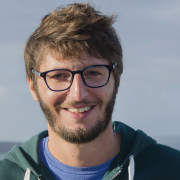 https://www-iuem.univ-brest.fr/lemar/wp-content/uploads/2018/05/Artigaud-Seb.jpg
1080
1920
sherve@univ-brest.fr
https://www-iuem.univ-brest.fr/lemar/wp-content/uploads/2018/10/logo-lemar-big.png
sherve@univ-brest.fr2021-06-02 15:03:382022-04-06 17:09:32Sébastien ARTIGAUD
https://www-iuem.univ-brest.fr/lemar/wp-content/uploads/2018/05/Artigaud-Seb.jpg
1080
1920
sherve@univ-brest.fr
https://www-iuem.univ-brest.fr/lemar/wp-content/uploads/2018/10/logo-lemar-big.png
sherve@univ-brest.fr2021-06-02 15:03:382022-04-06 17:09:32Sébastien ARTIGAUD https://www-iuem.univ-brest.fr/lemar/wp-content/uploads/2024/11/Bechennec_Nolwenn-main.jpg
1080
1920
Sebastien Herve
https://www-iuem.univ-brest.fr/lemar/wp-content/uploads/2018/10/logo-lemar-big.png
Sebastien Herve2024-11-19 12:17:472024-11-19 12:17:47Nolwenn BÉCHENNEC
https://www-iuem.univ-brest.fr/lemar/wp-content/uploads/2024/11/Bechennec_Nolwenn-main.jpg
1080
1920
Sebastien Herve
https://www-iuem.univ-brest.fr/lemar/wp-content/uploads/2018/10/logo-lemar-big.png
Sebastien Herve2024-11-19 12:17:472024-11-19 12:17:47Nolwenn BÉCHENNEC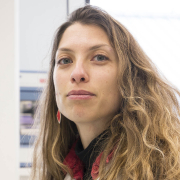 https://www-iuem.univ-brest.fr/lemar/wp-content/uploads/2018/05/Bidault_Adeline.jpg
1080
1920
sherve@univ-brest.fr
https://www-iuem.univ-brest.fr/lemar/wp-content/uploads/2018/10/logo-lemar-big.png
sherve@univ-brest.fr2018-05-28 14:22:512021-01-04 16:52:07Adeline BIDAULT
https://www-iuem.univ-brest.fr/lemar/wp-content/uploads/2018/05/Bidault_Adeline.jpg
1080
1920
sherve@univ-brest.fr
https://www-iuem.univ-brest.fr/lemar/wp-content/uploads/2018/10/logo-lemar-big.png
sherve@univ-brest.fr2018-05-28 14:22:512021-01-04 16:52:07Adeline BIDAULT https://www-iuem.univ-brest.fr/lemar/wp-content/uploads/2018/10/Buscaglia_Manon.jpg
1080
1920
sherve@univ-brest.fr
https://www-iuem.univ-brest.fr/lemar/wp-content/uploads/2018/10/logo-lemar-big.png
sherve@univ-brest.fr2018-10-03 17:22:432022-09-20 10:33:26Manon BUSCAGLIA
https://www-iuem.univ-brest.fr/lemar/wp-content/uploads/2018/10/Buscaglia_Manon.jpg
1080
1920
sherve@univ-brest.fr
https://www-iuem.univ-brest.fr/lemar/wp-content/uploads/2018/10/logo-lemar-big.png
sherve@univ-brest.fr2018-10-03 17:22:432022-09-20 10:33:26Manon BUSCAGLIA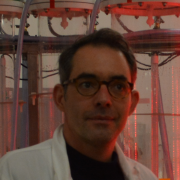 https://www-iuem.univ-brest.fr/lemar/wp-content/uploads/2019/01/portrait.png
952
916
sherve@univ-brest.fr
https://www-iuem.univ-brest.fr/lemar/wp-content/uploads/2018/10/logo-lemar-big.png
sherve@univ-brest.fr2018-10-29 10:36:292023-02-09 09:45:14Luc CHAUCHAT
https://www-iuem.univ-brest.fr/lemar/wp-content/uploads/2019/01/portrait.png
952
916
sherve@univ-brest.fr
https://www-iuem.univ-brest.fr/lemar/wp-content/uploads/2018/10/logo-lemar-big.png
sherve@univ-brest.fr2018-10-29 10:36:292023-02-09 09:45:14Luc CHAUCHAT https://www-iuem.univ-brest.fr/lemar/wp-content/uploads/2024/11/Yuna-Creach-1-1-scaled.jpg
1709
2560
Sebastien Herve
https://www-iuem.univ-brest.fr/lemar/wp-content/uploads/2018/10/logo-lemar-big.png
Sebastien Herve2024-09-16 16:33:162024-09-26 15:05:15Yuna CREAC’H
https://www-iuem.univ-brest.fr/lemar/wp-content/uploads/2024/11/Yuna-Creach-1-1-scaled.jpg
1709
2560
Sebastien Herve
https://www-iuem.univ-brest.fr/lemar/wp-content/uploads/2018/10/logo-lemar-big.png
Sebastien Herve2024-09-16 16:33:162024-09-26 15:05:15Yuna CREAC’H https://www-iuem.univ-brest.fr/lemar/wp-content/uploads/2024/11/Delaire_Tome-main.jpg
1080
1920
Sebastien Herve
https://www-iuem.univ-brest.fr/lemar/wp-content/uploads/2018/10/logo-lemar-big.png
Sebastien Herve2024-11-27 11:53:322024-11-27 11:54:32Tomé DELAIRE
https://www-iuem.univ-brest.fr/lemar/wp-content/uploads/2024/11/Delaire_Tome-main.jpg
1080
1920
Sebastien Herve
https://www-iuem.univ-brest.fr/lemar/wp-content/uploads/2018/10/logo-lemar-big.png
Sebastien Herve2024-11-27 11:53:322024-11-27 11:54:32Tomé DELAIRE https://www-iuem.univ-brest.fr/lemar/wp-content/uploads/2020/05/Diagne_Moussa-main.jpg
1080
1920
sherve@univ-brest.fr
https://www-iuem.univ-brest.fr/lemar/wp-content/uploads/2018/10/logo-lemar-big.png
sherve@univ-brest.fr2020-05-04 12:12:162021-01-04 16:53:34Moussa DIAGNE
https://www-iuem.univ-brest.fr/lemar/wp-content/uploads/2020/05/Diagne_Moussa-main.jpg
1080
1920
sherve@univ-brest.fr
https://www-iuem.univ-brest.fr/lemar/wp-content/uploads/2018/10/logo-lemar-big.png
sherve@univ-brest.fr2020-05-04 12:12:162021-01-04 16:53:34Moussa DIAGNE https://www-iuem.univ-brest.fr/lemar/wp-content/uploads/2018/04/generic-lemar-woman.png
1080
1920
sherve@univ-brest.fr
https://www-iuem.univ-brest.fr/lemar/wp-content/uploads/2018/10/logo-lemar-big.png
sherve@univ-brest.fr2018-10-29 10:15:272021-01-04 16:43:39Christine DUBREUIL
https://www-iuem.univ-brest.fr/lemar/wp-content/uploads/2018/04/generic-lemar-woman.png
1080
1920
sherve@univ-brest.fr
https://www-iuem.univ-brest.fr/lemar/wp-content/uploads/2018/10/logo-lemar-big.png
sherve@univ-brest.fr2018-10-29 10:15:272021-01-04 16:43:39Christine DUBREUIL https://www-iuem.univ-brest.fr/lemar/wp-content/uploads/2018/04/generic-lemar-woman.png
1080
1920
sherve@univ-brest.fr
https://www-iuem.univ-brest.fr/lemar/wp-content/uploads/2018/10/logo-lemar-big.png
sherve@univ-brest.fr2018-10-29 10:15:282021-01-04 16:56:53Marilyne FAUCHON
https://www-iuem.univ-brest.fr/lemar/wp-content/uploads/2018/04/generic-lemar-woman.png
1080
1920
sherve@univ-brest.fr
https://www-iuem.univ-brest.fr/lemar/wp-content/uploads/2018/10/logo-lemar-big.png
sherve@univ-brest.fr2018-10-29 10:15:282021-01-04 16:56:53Marilyne FAUCHON https://www-iuem.univ-brest.fr/lemar/wp-content/uploads/2024/11/Graton_Salome-main.jpg
1080
1920
petek
https://www-iuem.univ-brest.fr/lemar/wp-content/uploads/2018/10/logo-lemar-big.png
petek2024-11-12 16:49:002024-11-19 10:12:27Salomé GRATON
https://www-iuem.univ-brest.fr/lemar/wp-content/uploads/2024/11/Graton_Salome-main.jpg
1080
1920
petek
https://www-iuem.univ-brest.fr/lemar/wp-content/uploads/2018/10/logo-lemar-big.png
petek2024-11-12 16:49:002024-11-19 10:12:27Salomé GRATON https://www-iuem.univ-brest.fr/lemar/wp-content/uploads/2024/09/Gromberg_Theo-main.jpg
1080
1920
Sebastien Herve
https://www-iuem.univ-brest.fr/lemar/wp-content/uploads/2018/10/logo-lemar-big.png
Sebastien Herve2024-09-26 15:16:362024-09-26 15:31:54Théo GROMBERG
https://www-iuem.univ-brest.fr/lemar/wp-content/uploads/2024/09/Gromberg_Theo-main.jpg
1080
1920
Sebastien Herve
https://www-iuem.univ-brest.fr/lemar/wp-content/uploads/2018/10/logo-lemar-big.png
Sebastien Herve2024-09-26 15:16:362024-09-26 15:31:54Théo GROMBERG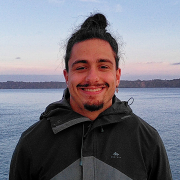 https://www-iuem.univ-brest.fr/lemar/wp-content/uploads/2020/12/Colin-Grunberger-2.jpg
1080
1920
petek
https://www-iuem.univ-brest.fr/lemar/wp-content/uploads/2018/10/logo-lemar-big.png
petek2020-12-11 12:12:272024-09-26 15:25:22Colin GRUNBERGER
https://www-iuem.univ-brest.fr/lemar/wp-content/uploads/2020/12/Colin-Grunberger-2.jpg
1080
1920
petek
https://www-iuem.univ-brest.fr/lemar/wp-content/uploads/2018/10/logo-lemar-big.png
petek2020-12-11 12:12:272024-09-26 15:25:22Colin GRUNBERGER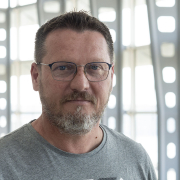 https://www-iuem.univ-brest.fr/lemar/wp-content/uploads/2020/12/Guenneguez_Alain-main.jpg
1080
1920
petek
https://www-iuem.univ-brest.fr/lemar/wp-content/uploads/2018/10/logo-lemar-big.png
petek2020-12-11 12:17:532022-07-12 17:54:59Alain GUENNEGUEZ
https://www-iuem.univ-brest.fr/lemar/wp-content/uploads/2020/12/Guenneguez_Alain-main.jpg
1080
1920
petek
https://www-iuem.univ-brest.fr/lemar/wp-content/uploads/2018/10/logo-lemar-big.png
petek2020-12-11 12:17:532022-07-12 17:54:59Alain GUENNEGUEZ https://www-iuem.univ-brest.fr/lemar/wp-content/uploads/2022/09/Harrault-loic-main.jpg
1080
1920
sherve@univ-brest.fr
https://www-iuem.univ-brest.fr/lemar/wp-content/uploads/2018/10/logo-lemar-big.png
sherve@univ-brest.fr2022-09-14 13:24:092022-09-22 12:25:30Loïc HARRAULT
https://www-iuem.univ-brest.fr/lemar/wp-content/uploads/2022/09/Harrault-loic-main.jpg
1080
1920
sherve@univ-brest.fr
https://www-iuem.univ-brest.fr/lemar/wp-content/uploads/2018/10/logo-lemar-big.png
sherve@univ-brest.fr2022-09-14 13:24:092022-09-22 12:25:30Loïc HARRAULT https://www-iuem.univ-brest.fr/lemar/wp-content/uploads/2018/07/Huber-Matthias.jpg
1080
1920
sherve@univ-brest.fr
https://www-iuem.univ-brest.fr/lemar/wp-content/uploads/2018/10/logo-lemar-big.png
sherve@univ-brest.fr2018-06-18 17:25:422021-01-04 16:57:54Matthias HUBER
https://www-iuem.univ-brest.fr/lemar/wp-content/uploads/2018/07/Huber-Matthias.jpg
1080
1920
sherve@univ-brest.fr
https://www-iuem.univ-brest.fr/lemar/wp-content/uploads/2018/10/logo-lemar-big.png
sherve@univ-brest.fr2018-06-18 17:25:422021-01-04 16:57:54Matthias HUBER https://www-iuem.univ-brest.fr/lemar/wp-content/uploads/2022/04/Jaffrezic_Enora-Main.jpg
1080
1920
sherve@univ-brest.fr
https://www-iuem.univ-brest.fr/lemar/wp-content/uploads/2018/10/logo-lemar-big.png
sherve@univ-brest.fr2022-04-20 11:36:232022-09-21 13:29:02Enora JAFFREZIC
https://www-iuem.univ-brest.fr/lemar/wp-content/uploads/2022/04/Jaffrezic_Enora-Main.jpg
1080
1920
sherve@univ-brest.fr
https://www-iuem.univ-brest.fr/lemar/wp-content/uploads/2018/10/logo-lemar-big.png
sherve@univ-brest.fr2022-04-20 11:36:232022-09-21 13:29:02Enora JAFFREZIC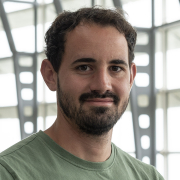 https://www-iuem.univ-brest.fr/lemar/wp-content/uploads/2021/03/Koechlin_Hugo.jpg
1080
1920
sherve@univ-brest.fr
https://www-iuem.univ-brest.fr/lemar/wp-content/uploads/2018/10/logo-lemar-big.png
sherve@univ-brest.fr2021-03-08 13:09:592021-03-08 13:10:44Hugo KOECHLIN
https://www-iuem.univ-brest.fr/lemar/wp-content/uploads/2021/03/Koechlin_Hugo.jpg
1080
1920
sherve@univ-brest.fr
https://www-iuem.univ-brest.fr/lemar/wp-content/uploads/2018/10/logo-lemar-big.png
sherve@univ-brest.fr2021-03-08 13:09:592021-03-08 13:10:44Hugo KOECHLIN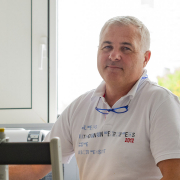 https://www-iuem.univ-brest.fr/lemar/wp-content/uploads/2018/05/Lambert-Christophe.jpg
1080
1920
sherve@univ-brest.fr
https://www-iuem.univ-brest.fr/lemar/wp-content/uploads/2018/10/logo-lemar-big.png
sherve@univ-brest.fr2018-05-28 14:23:082021-12-09 15:33:40Christophe LAMBERT
https://www-iuem.univ-brest.fr/lemar/wp-content/uploads/2018/05/Lambert-Christophe.jpg
1080
1920
sherve@univ-brest.fr
https://www-iuem.univ-brest.fr/lemar/wp-content/uploads/2018/10/logo-lemar-big.png
sherve@univ-brest.fr2018-05-28 14:23:082021-12-09 15:33:40Christophe LAMBERT https://www-iuem.univ-brest.fr/lemar/wp-content/uploads/2018/04/generic-lemar-woman.png
1080
1920
Sebastien Herve
https://www-iuem.univ-brest.fr/lemar/wp-content/uploads/2018/10/logo-lemar-big.png
Sebastien Herve2025-02-06 09:13:402025-02-06 09:14:18Sabrina LE CAM
https://www-iuem.univ-brest.fr/lemar/wp-content/uploads/2018/04/generic-lemar-woman.png
1080
1920
Sebastien Herve
https://www-iuem.univ-brest.fr/lemar/wp-content/uploads/2018/10/logo-lemar-big.png
Sebastien Herve2025-02-06 09:13:402025-02-06 09:14:18Sabrina LE CAM https://www-iuem.univ-brest.fr/lemar/wp-content/uploads/2018/04/generic-lemar-woman.png
1080
1920
Sebastien Herve
https://www-iuem.univ-brest.fr/lemar/wp-content/uploads/2018/10/logo-lemar-big.png
Sebastien Herve2024-11-27 11:34:282024-11-27 11:34:28LE DUIGOU
https://www-iuem.univ-brest.fr/lemar/wp-content/uploads/2018/04/generic-lemar-woman.png
1080
1920
Sebastien Herve
https://www-iuem.univ-brest.fr/lemar/wp-content/uploads/2018/10/logo-lemar-big.png
Sebastien Herve2024-11-27 11:34:282024-11-27 11:34:28LE DUIGOU https://www-iuem.univ-brest.fr/lemar/wp-content/uploads/2018/05/Le-Goic_Nelly-2022.jpg
1080
1920
sherve@univ-brest.fr
https://www-iuem.univ-brest.fr/lemar/wp-content/uploads/2018/10/logo-lemar-big.png
sherve@univ-brest.fr2018-05-28 14:23:092021-01-04 16:59:30Nelly LE GOIC
https://www-iuem.univ-brest.fr/lemar/wp-content/uploads/2018/05/Le-Goic_Nelly-2022.jpg
1080
1920
sherve@univ-brest.fr
https://www-iuem.univ-brest.fr/lemar/wp-content/uploads/2018/10/logo-lemar-big.png
sherve@univ-brest.fr2018-05-28 14:23:092021-01-04 16:59:30Nelly LE GOIC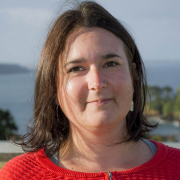 https://www-iuem.univ-brest.fr/lemar/wp-content/uploads/2018/05/Le-Grand-Fabienne-3.jpg
1080
1920
sherve@univ-brest.fr
https://www-iuem.univ-brest.fr/lemar/wp-content/uploads/2018/10/logo-lemar-big.png
sherve@univ-brest.fr2018-05-28 14:23:102021-01-04 16:59:16Fabienne LE GRAND
https://www-iuem.univ-brest.fr/lemar/wp-content/uploads/2018/05/Le-Grand-Fabienne-3.jpg
1080
1920
sherve@univ-brest.fr
https://www-iuem.univ-brest.fr/lemar/wp-content/uploads/2018/10/logo-lemar-big.png
sherve@univ-brest.fr2018-05-28 14:23:102021-01-04 16:59:16Fabienne LE GRAND https://www-iuem.univ-brest.fr/lemar/wp-content/uploads/2018/04/generic-lemar-woman.png
1080
1920
sherve@univ-brest.fr
https://www-iuem.univ-brest.fr/lemar/wp-content/uploads/2018/10/logo-lemar-big.png
sherve@univ-brest.fr2018-10-29 10:15:332021-01-04 16:58:59Jacqueline LE GRAND
https://www-iuem.univ-brest.fr/lemar/wp-content/uploads/2018/04/generic-lemar-woman.png
1080
1920
sherve@univ-brest.fr
https://www-iuem.univ-brest.fr/lemar/wp-content/uploads/2018/10/logo-lemar-big.png
sherve@univ-brest.fr2018-10-29 10:15:332021-01-04 16:58:59Jacqueline LE GRAND https://www-iuem.univ-brest.fr/lemar/wp-content/uploads/2018/04/generic-lemar-man.png
1080
1920
sherve@univ-brest.fr
https://www-iuem.univ-brest.fr/lemar/wp-content/uploads/2018/10/logo-lemar-big.png
sherve@univ-brest.fr2018-10-29 10:36:192021-01-04 16:49:47Valérian LE ROY
https://www-iuem.univ-brest.fr/lemar/wp-content/uploads/2018/04/generic-lemar-man.png
1080
1920
sherve@univ-brest.fr
https://www-iuem.univ-brest.fr/lemar/wp-content/uploads/2018/10/logo-lemar-big.png
sherve@univ-brest.fr2018-10-29 10:36:192021-01-04 16:49:47Valérian LE ROY https://www-iuem.univ-brest.fr/lemar/wp-content/uploads/2021/05/Lozach_Solen.jpg
1080
1920
sherve@univ-brest.fr
https://www-iuem.univ-brest.fr/lemar/wp-content/uploads/2018/10/logo-lemar-big.png
sherve@univ-brest.fr2021-05-07 10:38:162021-05-07 10:53:58Solen LOZACH
https://www-iuem.univ-brest.fr/lemar/wp-content/uploads/2021/05/Lozach_Solen.jpg
1080
1920
sherve@univ-brest.fr
https://www-iuem.univ-brest.fr/lemar/wp-content/uploads/2018/10/logo-lemar-big.png
sherve@univ-brest.fr2021-05-07 10:38:162021-05-07 10:53:58Solen LOZACH https://www-iuem.univ-brest.fr/lemar/wp-content/uploads/2018/10/Madec_Lauriane-main.jpg
1080
1920
sherve@univ-brest.fr
https://www-iuem.univ-brest.fr/lemar/wp-content/uploads/2018/10/logo-lemar-big.png
sherve@univ-brest.fr2018-10-29 10:15:352021-01-04 17:01:00Lauriane MADEC
https://www-iuem.univ-brest.fr/lemar/wp-content/uploads/2018/10/Madec_Lauriane-main.jpg
1080
1920
sherve@univ-brest.fr
https://www-iuem.univ-brest.fr/lemar/wp-content/uploads/2018/10/logo-lemar-big.png
sherve@univ-brest.fr2018-10-29 10:15:352021-01-04 17:01:00Lauriane MADEC https://www-iuem.univ-brest.fr/lemar/wp-content/uploads/2018/04/generic-lemar-man.png
1080
1920
Sebastien Herve
https://www-iuem.univ-brest.fr/lemar/wp-content/uploads/2018/10/logo-lemar-big.png
Sebastien Herve2024-11-20 10:59:042024-11-20 10:59:04Mathis MARGAULT-THEVENEAU
https://www-iuem.univ-brest.fr/lemar/wp-content/uploads/2018/04/generic-lemar-man.png
1080
1920
Sebastien Herve
https://www-iuem.univ-brest.fr/lemar/wp-content/uploads/2018/10/logo-lemar-big.png
Sebastien Herve2024-11-20 10:59:042024-11-20 10:59:04Mathis MARGAULT-THEVENEAU https://www-iuem.univ-brest.fr/lemar/wp-content/uploads/2018/04/generic-lemar-man.png
1080
1920
Sebastien Herve
https://www-iuem.univ-brest.fr/lemar/wp-content/uploads/2018/10/logo-lemar-big.png
Sebastien Herve2024-09-30 16:23:182024-09-30 16:23:18Mathias DALIAI
https://www-iuem.univ-brest.fr/lemar/wp-content/uploads/2018/04/generic-lemar-man.png
1080
1920
Sebastien Herve
https://www-iuem.univ-brest.fr/lemar/wp-content/uploads/2018/10/logo-lemar-big.png
Sebastien Herve2024-09-30 16:23:182024-09-30 16:23:18Mathias DALIAI https://www-iuem.univ-brest.fr/lemar/wp-content/uploads/2024/10/Merrien-Pauline-main.jpg
1080
1920
Sebastien Herve
https://www-iuem.univ-brest.fr/lemar/wp-content/uploads/2018/10/logo-lemar-big.png
Sebastien Herve2024-10-25 16:23:262024-10-25 16:23:26Pauline MERRIEN
https://www-iuem.univ-brest.fr/lemar/wp-content/uploads/2024/10/Merrien-Pauline-main.jpg
1080
1920
Sebastien Herve
https://www-iuem.univ-brest.fr/lemar/wp-content/uploads/2018/10/logo-lemar-big.png
Sebastien Herve2024-10-25 16:23:262024-10-25 16:23:26Pauline MERRIEN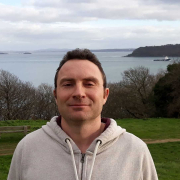 https://www-iuem.univ-brest.fr/lemar/wp-content/uploads/2018/10/olivier-mouchel-resized.jpeg
1080
1920
sherve@univ-brest.fr
https://www-iuem.univ-brest.fr/lemar/wp-content/uploads/2018/10/logo-lemar-big.png
sherve@univ-brest.fr2018-10-29 10:36:212021-01-04 16:53:57Olivier MOUCHEL
https://www-iuem.univ-brest.fr/lemar/wp-content/uploads/2018/10/olivier-mouchel-resized.jpeg
1080
1920
sherve@univ-brest.fr
https://www-iuem.univ-brest.fr/lemar/wp-content/uploads/2018/10/logo-lemar-big.png
sherve@univ-brest.fr2018-10-29 10:36:212021-01-04 16:53:57Olivier MOUCHEL https://www-iuem.univ-brest.fr/lemar/wp-content/uploads/2022/02/Oliveira-Cynthia.jpg
1080
1920
sherve@univ-brest.fr
https://www-iuem.univ-brest.fr/lemar/wp-content/uploads/2018/10/logo-lemar-big.png
sherve@univ-brest.fr2022-02-22 11:50:572024-06-06 10:25:28Cynthia OLIVEIRA
https://www-iuem.univ-brest.fr/lemar/wp-content/uploads/2022/02/Oliveira-Cynthia.jpg
1080
1920
sherve@univ-brest.fr
https://www-iuem.univ-brest.fr/lemar/wp-content/uploads/2018/10/logo-lemar-big.png
sherve@univ-brest.fr2022-02-22 11:50:572024-06-06 10:25:28Cynthia OLIVEIRA https://www-iuem.univ-brest.fr/lemar/wp-content/uploads/2024/10/Paul_Emilie-Main.jpg
1080
1920
Sebastien Herve
https://www-iuem.univ-brest.fr/lemar/wp-content/uploads/2018/10/logo-lemar-big.png
Sebastien Herve2024-10-18 09:31:542024-10-18 09:32:13Émilie PAUL
https://www-iuem.univ-brest.fr/lemar/wp-content/uploads/2024/10/Paul_Emilie-Main.jpg
1080
1920
Sebastien Herve
https://www-iuem.univ-brest.fr/lemar/wp-content/uploads/2018/10/logo-lemar-big.png
Sebastien Herve2024-10-18 09:31:542024-10-18 09:32:13Émilie PAUL https://www-iuem.univ-brest.fr/lemar/wp-content/uploads/2018/12/MPv2.jpg
283
357
sherve@univ-brest.fr
https://www-iuem.univ-brest.fr/lemar/wp-content/uploads/2018/10/logo-lemar-big.png
sherve@univ-brest.fr2018-10-29 10:15:382021-01-04 17:00:17Morgan PERENNOU
https://www-iuem.univ-brest.fr/lemar/wp-content/uploads/2018/12/MPv2.jpg
283
357
sherve@univ-brest.fr
https://www-iuem.univ-brest.fr/lemar/wp-content/uploads/2018/10/logo-lemar-big.png
sherve@univ-brest.fr2018-10-29 10:15:382021-01-04 17:00:17Morgan PERENNOU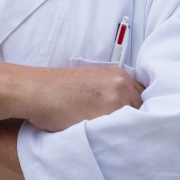 https://www-iuem.univ-brest.fr/lemar/wp-content/uploads/2018/06/Queau-Isabelle.jpg
1080
1920
sherve@univ-brest.fr
https://www-iuem.univ-brest.fr/lemar/wp-content/uploads/2018/10/logo-lemar-big.png
sherve@univ-brest.fr2018-06-18 17:26:452021-02-25 10:52:10Isabelle QUEAU
https://www-iuem.univ-brest.fr/lemar/wp-content/uploads/2018/06/Queau-Isabelle.jpg
1080
1920
sherve@univ-brest.fr
https://www-iuem.univ-brest.fr/lemar/wp-content/uploads/2018/10/logo-lemar-big.png
sherve@univ-brest.fr2018-06-18 17:26:452021-02-25 10:52:10Isabelle QUEAU https://www-iuem.univ-brest.fr/lemar/wp-content/uploads/2018/04/generic-lemar-man.png
1080
1920
sherve@univ-brest.fr
https://www-iuem.univ-brest.fr/lemar/wp-content/uploads/2018/10/logo-lemar-big.png
sherve@univ-brest.fr2021-09-20 10:45:552021-09-20 10:45:55Maxence QUEMENER
https://www-iuem.univ-brest.fr/lemar/wp-content/uploads/2018/04/generic-lemar-man.png
1080
1920
sherve@univ-brest.fr
https://www-iuem.univ-brest.fr/lemar/wp-content/uploads/2018/10/logo-lemar-big.png
sherve@univ-brest.fr2021-09-20 10:45:552021-09-20 10:45:55Maxence QUEMENER https://www-iuem.univ-brest.fr/lemar/wp-content/uploads/2018/04/generic-lemar-woman.png
1080
1920
sherve@univ-brest.fr
https://www-iuem.univ-brest.fr/lemar/wp-content/uploads/2018/10/logo-lemar-big.png
sherve@univ-brest.fr2018-10-29 10:15:402021-01-04 17:01:48Claudie QUERE
https://www-iuem.univ-brest.fr/lemar/wp-content/uploads/2018/04/generic-lemar-woman.png
1080
1920
sherve@univ-brest.fr
https://www-iuem.univ-brest.fr/lemar/wp-content/uploads/2018/10/logo-lemar-big.png
sherve@univ-brest.fr2018-10-29 10:15:402021-01-04 17:01:48Claudie QUERE https://www-iuem.univ-brest.fr/lemar/wp-content/uploads/2018/04/generic-lemar-man.png
1080
1920
sherve@univ-brest.fr
https://www-iuem.univ-brest.fr/lemar/wp-content/uploads/2018/10/logo-lemar-big.png
sherve@univ-brest.fr2021-02-25 10:55:112021-02-25 10:57:13Virgile QUILLIEN
https://www-iuem.univ-brest.fr/lemar/wp-content/uploads/2018/04/generic-lemar-man.png
1080
1920
sherve@univ-brest.fr
https://www-iuem.univ-brest.fr/lemar/wp-content/uploads/2018/10/logo-lemar-big.png
sherve@univ-brest.fr2021-02-25 10:55:112021-02-25 10:57:13Virgile QUILLIEN https://www-iuem.univ-brest.fr/lemar/wp-content/uploads/2020/12/Simon_Victor_main.jpg
1080
1920
sherve@univ-brest.fr
https://www-iuem.univ-brest.fr/lemar/wp-content/uploads/2018/10/logo-lemar-big.png
sherve@univ-brest.fr2020-12-18 15:45:072025-01-23 13:03:49Victor SIMON
https://www-iuem.univ-brest.fr/lemar/wp-content/uploads/2020/12/Simon_Victor_main.jpg
1080
1920
sherve@univ-brest.fr
https://www-iuem.univ-brest.fr/lemar/wp-content/uploads/2018/10/logo-lemar-big.png
sherve@univ-brest.fr2020-12-18 15:45:072025-01-23 13:03:49Victor SIMON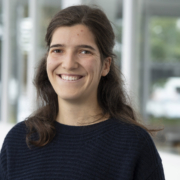 https://www-iuem.univ-brest.fr/lemar/wp-content/uploads/2024/10/Aladjidi_Domitille-main.jpg
1080
1920
Sebastien Herve
https://www-iuem.univ-brest.fr/lemar/wp-content/uploads/2018/10/logo-lemar-big.png
Sebastien Herve2024-10-18 11:52:592024-10-18 11:52:59Domitille ALADJIDI
https://www-iuem.univ-brest.fr/lemar/wp-content/uploads/2024/10/Aladjidi_Domitille-main.jpg
1080
1920
Sebastien Herve
https://www-iuem.univ-brest.fr/lemar/wp-content/uploads/2018/10/logo-lemar-big.png
Sebastien Herve2024-10-18 11:52:592024-10-18 11:52:59Domitille ALADJIDI https://www-iuem.univ-brest.fr/lemar/wp-content/uploads/2018/04/generic-lemar-man.png
1080
1920
sherve@univ-brest.fr
https://www-iuem.univ-brest.fr/lemar/wp-content/uploads/2018/10/logo-lemar-big.png
sherve@univ-brest.fr2023-03-09 10:21:452023-03-09 10:26:17Antoine AUGIAS
https://www-iuem.univ-brest.fr/lemar/wp-content/uploads/2018/04/generic-lemar-man.png
1080
1920
sherve@univ-brest.fr
https://www-iuem.univ-brest.fr/lemar/wp-content/uploads/2018/10/logo-lemar-big.png
sherve@univ-brest.fr2023-03-09 10:21:452023-03-09 10:26:17Antoine AUGIAS https://www-iuem.univ-brest.fr/lemar/wp-content/uploads/2018/04/generic-lemar-woman.png
1080
1920
Sebastien Herve
https://www-iuem.univ-brest.fr/lemar/wp-content/uploads/2018/10/logo-lemar-big.png
Sebastien Herve2025-01-15 13:09:212025-01-15 13:14:20Hana CHELLY
https://www-iuem.univ-brest.fr/lemar/wp-content/uploads/2018/04/generic-lemar-woman.png
1080
1920
Sebastien Herve
https://www-iuem.univ-brest.fr/lemar/wp-content/uploads/2018/10/logo-lemar-big.png
Sebastien Herve2025-01-15 13:09:212025-01-15 13:14:20Hana CHELLY https://www-iuem.univ-brest.fr/lemar/wp-content/uploads/2021/10/Fouassier_Justine-main.jpg
1080
1920
sherve@univ-brest.fr
https://www-iuem.univ-brest.fr/lemar/wp-content/uploads/2018/10/logo-lemar-big.png
sherve@univ-brest.fr2021-10-11 16:58:172022-10-12 14:16:11Justine FOUASSIER
https://www-iuem.univ-brest.fr/lemar/wp-content/uploads/2021/10/Fouassier_Justine-main.jpg
1080
1920
sherve@univ-brest.fr
https://www-iuem.univ-brest.fr/lemar/wp-content/uploads/2018/10/logo-lemar-big.png
sherve@univ-brest.fr2021-10-11 16:58:172022-10-12 14:16:11Justine FOUASSIER https://www-iuem.univ-brest.fr/lemar/wp-content/uploads/2021/10/Gauyat_Camberra.jpg
1080
1920
sherve@univ-brest.fr
https://www-iuem.univ-brest.fr/lemar/wp-content/uploads/2018/10/logo-lemar-big.png
sherve@univ-brest.fr2021-10-11 14:52:472022-03-18 09:25:33Camberra GAUYAT
https://www-iuem.univ-brest.fr/lemar/wp-content/uploads/2021/10/Gauyat_Camberra.jpg
1080
1920
sherve@univ-brest.fr
https://www-iuem.univ-brest.fr/lemar/wp-content/uploads/2018/10/logo-lemar-big.png
sherve@univ-brest.fr2021-10-11 14:52:472022-03-18 09:25:33Camberra GAUYAT https://www-iuem.univ-brest.fr/lemar/wp-content/uploads/2018/04/generic-lemar-woman.png
1080
1920
sherve@univ-brest.fr
https://www-iuem.univ-brest.fr/lemar/wp-content/uploads/2018/10/logo-lemar-big.png
sherve@univ-brest.fr2022-10-12 13:25:572022-10-12 13:34:19Alisson GODINO SANCHEZ
https://www-iuem.univ-brest.fr/lemar/wp-content/uploads/2018/04/generic-lemar-woman.png
1080
1920
sherve@univ-brest.fr
https://www-iuem.univ-brest.fr/lemar/wp-content/uploads/2018/10/logo-lemar-big.png
sherve@univ-brest.fr2022-10-12 13:25:572022-10-12 13:34:19Alisson GODINO SANCHEZ https://www-iuem.univ-brest.fr/lemar/wp-content/uploads/2022/11/GOURIOU_Bastian-main.jpg
1080
1920
sherve@univ-brest.fr
https://www-iuem.univ-brest.fr/lemar/wp-content/uploads/2018/10/logo-lemar-big.png
sherve@univ-brest.fr2022-11-18 15:19:452024-11-19 12:48:15Bastian GOURIOU
https://www-iuem.univ-brest.fr/lemar/wp-content/uploads/2022/11/GOURIOU_Bastian-main.jpg
1080
1920
sherve@univ-brest.fr
https://www-iuem.univ-brest.fr/lemar/wp-content/uploads/2018/10/logo-lemar-big.png
sherve@univ-brest.fr2022-11-18 15:19:452024-11-19 12:48:15Bastian GOURIOU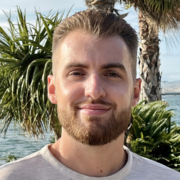 https://www-iuem.univ-brest.fr/lemar/wp-content/uploads/2024/10/Herteman-billottet_hugo-Main.jpg
1080
1920
Sebastien Herve
https://www-iuem.univ-brest.fr/lemar/wp-content/uploads/2018/10/logo-lemar-big.png
Sebastien Herve2024-10-17 17:04:422024-10-17 17:04:42Hugo HERTEMAN-BILLOTTET
https://www-iuem.univ-brest.fr/lemar/wp-content/uploads/2024/10/Herteman-billottet_hugo-Main.jpg
1080
1920
Sebastien Herve
https://www-iuem.univ-brest.fr/lemar/wp-content/uploads/2018/10/logo-lemar-big.png
Sebastien Herve2024-10-17 17:04:422024-10-17 17:04:42Hugo HERTEMAN-BILLOTTET https://www-iuem.univ-brest.fr/lemar/wp-content/uploads/2022/10/Isaia_Anna-main.jpg
1080
1920
sherve@univ-brest.fr
https://www-iuem.univ-brest.fr/lemar/wp-content/uploads/2018/10/logo-lemar-big.png
sherve@univ-brest.fr2022-10-26 10:25:412022-10-26 10:30:22Anna ISAIA
https://www-iuem.univ-brest.fr/lemar/wp-content/uploads/2022/10/Isaia_Anna-main.jpg
1080
1920
sherve@univ-brest.fr
https://www-iuem.univ-brest.fr/lemar/wp-content/uploads/2018/10/logo-lemar-big.png
sherve@univ-brest.fr2022-10-26 10:25:412022-10-26 10:30:22Anna ISAIA https://www-iuem.univ-brest.fr/lemar/wp-content/uploads/2023/03/Jeunet_Lea.jpg
1080
1920
sherve@univ-brest.fr
https://www-iuem.univ-brest.fr/lemar/wp-content/uploads/2018/10/logo-lemar-big.png
sherve@univ-brest.fr2023-03-23 16:46:392023-11-13 09:40:23Léa JEUNET
https://www-iuem.univ-brest.fr/lemar/wp-content/uploads/2023/03/Jeunet_Lea.jpg
1080
1920
sherve@univ-brest.fr
https://www-iuem.univ-brest.fr/lemar/wp-content/uploads/2018/10/logo-lemar-big.png
sherve@univ-brest.fr2023-03-23 16:46:392023-11-13 09:40:23Léa JEUNET https://www-iuem.univ-brest.fr/lemar/wp-content/uploads/2024/10/Jodet_Sylvain-main.jpg
1080
1920
Sebastien Herve
https://www-iuem.univ-brest.fr/lemar/wp-content/uploads/2018/10/logo-lemar-big.png
Sebastien Herve2024-10-18 10:31:472024-11-04 13:49:24Sylvain JODET
https://www-iuem.univ-brest.fr/lemar/wp-content/uploads/2024/10/Jodet_Sylvain-main.jpg
1080
1920
Sebastien Herve
https://www-iuem.univ-brest.fr/lemar/wp-content/uploads/2018/10/logo-lemar-big.png
Sebastien Herve2024-10-18 10:31:472024-11-04 13:49:24Sylvain JODET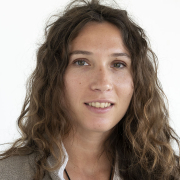 https://www-iuem.univ-brest.fr/lemar/wp-content/uploads/2021/10/Lam-Kim_Flora.jpg
1080
1920
sherve@univ-brest.fr
https://www-iuem.univ-brest.fr/lemar/wp-content/uploads/2018/10/logo-lemar-big.png
sherve@univ-brest.fr2021-10-07 16:30:012021-10-18 11:38:52Flora LAM-KIM
https://www-iuem.univ-brest.fr/lemar/wp-content/uploads/2021/10/Lam-Kim_Flora.jpg
1080
1920
sherve@univ-brest.fr
https://www-iuem.univ-brest.fr/lemar/wp-content/uploads/2018/10/logo-lemar-big.png
sherve@univ-brest.fr2021-10-07 16:30:012021-10-18 11:38:52Flora LAM-KIM https://www-iuem.univ-brest.fr/lemar/wp-content/uploads/2018/04/generic-lemar-woman.png
1080
1920
Sebastien Herve
https://www-iuem.univ-brest.fr/lemar/wp-content/uploads/2018/10/logo-lemar-big.png
Sebastien Herve2025-02-05 14:01:302025-02-05 14:04:44Julie LANDIER
https://www-iuem.univ-brest.fr/lemar/wp-content/uploads/2018/04/generic-lemar-woman.png
1080
1920
Sebastien Herve
https://www-iuem.univ-brest.fr/lemar/wp-content/uploads/2018/10/logo-lemar-big.png
Sebastien Herve2025-02-05 14:01:302025-02-05 14:04:44Julie LANDIER https://www-iuem.univ-brest.fr/lemar/wp-content/uploads/2023/12/Lebrun-Melody.jpg
1080
1920
Sebastien Herve
https://www-iuem.univ-brest.fr/lemar/wp-content/uploads/2018/10/logo-lemar-big.png
Sebastien Herve2023-12-22 11:20:302024-11-21 16:48:25Mélody LE BRUN
https://www-iuem.univ-brest.fr/lemar/wp-content/uploads/2023/12/Lebrun-Melody.jpg
1080
1920
Sebastien Herve
https://www-iuem.univ-brest.fr/lemar/wp-content/uploads/2018/10/logo-lemar-big.png
Sebastien Herve2023-12-22 11:20:302024-11-21 16:48:25Mélody LE BRUN https://www-iuem.univ-brest.fr/lemar/wp-content/uploads/2022/10/Le-Gall_Ronan-main.jpg
1080
1920
sherve@univ-brest.fr
https://www-iuem.univ-brest.fr/lemar/wp-content/uploads/2018/10/logo-lemar-big.png
sherve@univ-brest.fr2022-10-21 15:09:322022-10-21 15:13:50Ronan LE GALL
https://www-iuem.univ-brest.fr/lemar/wp-content/uploads/2022/10/Le-Gall_Ronan-main.jpg
1080
1920
sherve@univ-brest.fr
https://www-iuem.univ-brest.fr/lemar/wp-content/uploads/2018/10/logo-lemar-big.png
sherve@univ-brest.fr2022-10-21 15:09:322022-10-21 15:13:50Ronan LE GALL https://www-iuem.univ-brest.fr/lemar/wp-content/uploads/2022/10/Le-Moan_Eline-main.jpg
1080
1920
sherve@univ-brest.fr
https://www-iuem.univ-brest.fr/lemar/wp-content/uploads/2018/10/logo-lemar-big.png
sherve@univ-brest.fr2022-10-21 15:31:082022-10-21 15:42:21Eline LE MOAN
https://www-iuem.univ-brest.fr/lemar/wp-content/uploads/2022/10/Le-Moan_Eline-main.jpg
1080
1920
sherve@univ-brest.fr
https://www-iuem.univ-brest.fr/lemar/wp-content/uploads/2018/10/logo-lemar-big.png
sherve@univ-brest.fr2022-10-21 15:31:082022-10-21 15:42:21Eline LE MOAN https://www-iuem.univ-brest.fr/lemar/wp-content/uploads/2023/12/Le-Noc_Morgane.jpg
1080
1920
Sebastien Herve
https://www-iuem.univ-brest.fr/lemar/wp-content/uploads/2018/10/logo-lemar-big.png
Sebastien Herve2023-12-11 11:12:552023-12-11 11:15:49Morgane LE NOC
https://www-iuem.univ-brest.fr/lemar/wp-content/uploads/2023/12/Le-Noc_Morgane.jpg
1080
1920
Sebastien Herve
https://www-iuem.univ-brest.fr/lemar/wp-content/uploads/2018/10/logo-lemar-big.png
Sebastien Herve2023-12-11 11:12:552023-12-11 11:15:49Morgane LE NOC https://www-iuem.univ-brest.fr/lemar/wp-content/uploads/2018/04/generic-lemar-woman.png
1080
1920
Sebastien Herve
https://www-iuem.univ-brest.fr/lemar/wp-content/uploads/2018/10/logo-lemar-big.png
Sebastien Herve2025-02-05 10:00:352025-02-05 10:11:58Marie LENEVEU
https://www-iuem.univ-brest.fr/lemar/wp-content/uploads/2018/04/generic-lemar-woman.png
1080
1920
Sebastien Herve
https://www-iuem.univ-brest.fr/lemar/wp-content/uploads/2018/10/logo-lemar-big.png
Sebastien Herve2025-02-05 10:00:352025-02-05 10:11:58Marie LENEVEU https://www-iuem.univ-brest.fr/lemar/wp-content/uploads/2018/04/generic-lemar-woman.png
1080
1920
Sebastien Herve
https://www-iuem.univ-brest.fr/lemar/wp-content/uploads/2018/10/logo-lemar-big.png
Sebastien Herve2024-06-06 09:39:452024-06-06 10:17:41Klervi LUGUÉ
https://www-iuem.univ-brest.fr/lemar/wp-content/uploads/2018/04/generic-lemar-woman.png
1080
1920
Sebastien Herve
https://www-iuem.univ-brest.fr/lemar/wp-content/uploads/2018/10/logo-lemar-big.png
Sebastien Herve2024-06-06 09:39:452024-06-06 10:17:41Klervi LUGUÉ https://www-iuem.univ-brest.fr/lemar/wp-content/uploads/2023/12/Marzari_Adeline-main.jpg
1080
1920
Sebastien Herve
https://www-iuem.univ-brest.fr/lemar/wp-content/uploads/2018/10/logo-lemar-big.png
Sebastien Herve2023-12-06 17:22:202023-12-06 17:25:57Adeline MARZARI
https://www-iuem.univ-brest.fr/lemar/wp-content/uploads/2023/12/Marzari_Adeline-main.jpg
1080
1920
Sebastien Herve
https://www-iuem.univ-brest.fr/lemar/wp-content/uploads/2018/10/logo-lemar-big.png
Sebastien Herve2023-12-06 17:22:202023-12-06 17:25:57Adeline MARZARI https://www-iuem.univ-brest.fr/lemar/wp-content/uploads/2018/04/generic-lemar-man.png
1080
1920
Sebastien Herve
https://www-iuem.univ-brest.fr/lemar/wp-content/uploads/2018/10/logo-lemar-big.png
Sebastien Herve2025-02-05 17:17:382025-02-05 17:22:34Tom RAINBOW
https://www-iuem.univ-brest.fr/lemar/wp-content/uploads/2018/04/generic-lemar-man.png
1080
1920
Sebastien Herve
https://www-iuem.univ-brest.fr/lemar/wp-content/uploads/2018/10/logo-lemar-big.png
Sebastien Herve2025-02-05 17:17:382025-02-05 17:22:34Tom RAINBOW https://www-iuem.univ-brest.fr/lemar/wp-content/uploads/2018/04/generic-lemar-woman.png
1080
1920
sherve@univ-brest.fr
https://www-iuem.univ-brest.fr/lemar/wp-content/uploads/2018/10/logo-lemar-big.png
sherve@univ-brest.fr2022-10-12 13:42:052022-10-12 13:49:32Mathilde TEYSSIER
https://www-iuem.univ-brest.fr/lemar/wp-content/uploads/2018/04/generic-lemar-woman.png
1080
1920
sherve@univ-brest.fr
https://www-iuem.univ-brest.fr/lemar/wp-content/uploads/2018/10/logo-lemar-big.png
sherve@univ-brest.fr2022-10-12 13:42:052022-10-12 13:49:32Mathilde TEYSSIER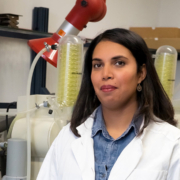 https://www-iuem.univ-brest.fr/lemar/wp-content/uploads/2024/04/Beesoo-Rima.jpg
1080
1920
Sebastien Herve
https://www-iuem.univ-brest.fr/lemar/wp-content/uploads/2018/10/logo-lemar-big.png
Sebastien Herve2024-04-10 09:15:542024-06-11 09:32:21Rima BEESOO
https://www-iuem.univ-brest.fr/lemar/wp-content/uploads/2024/04/Beesoo-Rima.jpg
1080
1920
Sebastien Herve
https://www-iuem.univ-brest.fr/lemar/wp-content/uploads/2018/10/logo-lemar-big.png
Sebastien Herve2024-04-10 09:15:542024-06-11 09:32:21Rima BEESOO https://www-iuem.univ-brest.fr/lemar/wp-content/uploads/2018/04/generic-lemar-woman.png
1080
1920
sherve@univ-brest.fr
https://www-iuem.univ-brest.fr/lemar/wp-content/uploads/2018/10/logo-lemar-big.png
sherve@univ-brest.fr2022-01-03 10:29:452022-01-05 16:31:25Cristina GARCIA FERNANDEZ
https://www-iuem.univ-brest.fr/lemar/wp-content/uploads/2018/04/generic-lemar-woman.png
1080
1920
sherve@univ-brest.fr
https://www-iuem.univ-brest.fr/lemar/wp-content/uploads/2018/10/logo-lemar-big.png
sherve@univ-brest.fr2022-01-03 10:29:452022-01-05 16:31:25Cristina GARCIA FERNANDEZ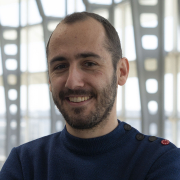 https://www-iuem.univ-brest.fr/lemar/wp-content/uploads/2023/03/Ghinter_Leopold_main.jpg
1080
1920
sherve@univ-brest.fr
https://www-iuem.univ-brest.fr/lemar/wp-content/uploads/2018/10/logo-lemar-big.png
sherve@univ-brest.fr2023-03-31 09:40:242024-02-06 09:10:13Léopold GHINTER
https://www-iuem.univ-brest.fr/lemar/wp-content/uploads/2023/03/Ghinter_Leopold_main.jpg
1080
1920
sherve@univ-brest.fr
https://www-iuem.univ-brest.fr/lemar/wp-content/uploads/2018/10/logo-lemar-big.png
sherve@univ-brest.fr2023-03-31 09:40:242024-02-06 09:10:13Léopold GHINTER https://www-iuem.univ-brest.fr/lemar/wp-content/uploads/2022/11/Malkocs_Tamas-main.png
1080
1920
sherve@univ-brest.fr
https://www-iuem.univ-brest.fr/lemar/wp-content/uploads/2018/10/logo-lemar-big.png
sherve@univ-brest.fr2022-11-30 10:59:052022-11-30 11:08:33Tamás MALKÓCS
https://www-iuem.univ-brest.fr/lemar/wp-content/uploads/2022/11/Malkocs_Tamas-main.png
1080
1920
sherve@univ-brest.fr
https://www-iuem.univ-brest.fr/lemar/wp-content/uploads/2018/10/logo-lemar-big.png
sherve@univ-brest.fr2022-11-30 10:59:052022-11-30 11:08:33Tamás MALKÓCS https://www-iuem.univ-brest.fr/lemar/wp-content/uploads/2021/11/Mello-Danielle.jpg
1080
1920
sherve@univ-brest.fr
https://www-iuem.univ-brest.fr/lemar/wp-content/uploads/2018/10/logo-lemar-big.png
sherve@univ-brest.fr2021-12-02 13:48:512022-03-29 12:42:03Danielle MELLO
https://www-iuem.univ-brest.fr/lemar/wp-content/uploads/2021/11/Mello-Danielle.jpg
1080
1920
sherve@univ-brest.fr
https://www-iuem.univ-brest.fr/lemar/wp-content/uploads/2018/10/logo-lemar-big.png
sherve@univ-brest.fr2021-12-02 13:48:512022-03-29 12:42:03Danielle MELLO https://www-iuem.univ-brest.fr/lemar/wp-content/uploads/2021/09/Paulino-sauvann.jpg
1080
1920
sherve@univ-brest.fr
https://www-iuem.univ-brest.fr/lemar/wp-content/uploads/2018/10/logo-lemar-big.png
sherve@univ-brest.fr2021-09-23 10:06:552024-10-08 09:15:55Sauvann PAULINO
https://www-iuem.univ-brest.fr/lemar/wp-content/uploads/2021/09/Paulino-sauvann.jpg
1080
1920
sherve@univ-brest.fr
https://www-iuem.univ-brest.fr/lemar/wp-content/uploads/2018/10/logo-lemar-big.png
sherve@univ-brest.fr2021-09-23 10:06:552024-10-08 09:15:55Sauvann PAULINO https://www-iuem.univ-brest.fr/lemar/wp-content/uploads/2023/05/Qui-Minet-Zujaila-main.jpg
1080
1920
sherve@univ-brest.fr
https://www-iuem.univ-brest.fr/lemar/wp-content/uploads/2018/10/logo-lemar-big.png
sherve@univ-brest.fr2024-03-29 09:10:072024-03-29 09:10:07QUI MINET Zujaila Nohemy
https://www-iuem.univ-brest.fr/lemar/wp-content/uploads/2023/05/Qui-Minet-Zujaila-main.jpg
1080
1920
sherve@univ-brest.fr
https://www-iuem.univ-brest.fr/lemar/wp-content/uploads/2018/10/logo-lemar-big.png
sherve@univ-brest.fr2024-03-29 09:10:072024-03-29 09:10:07QUI MINET Zujaila NohemyCopyright : Laboratoire LEMAR- 2018
